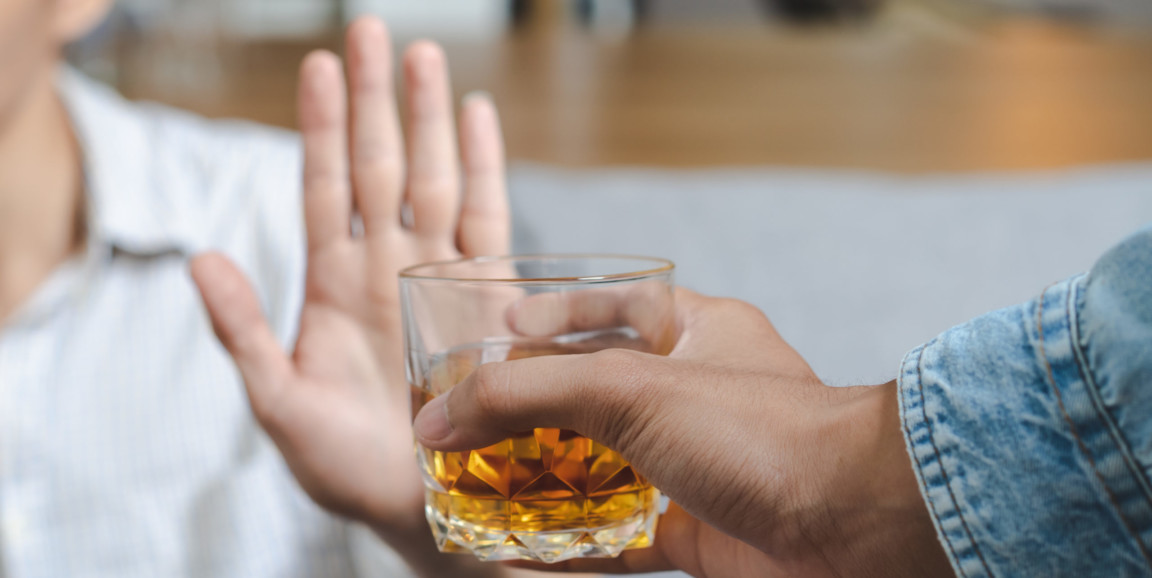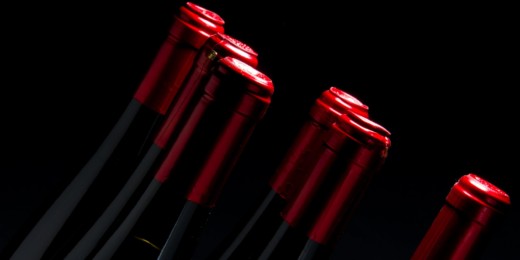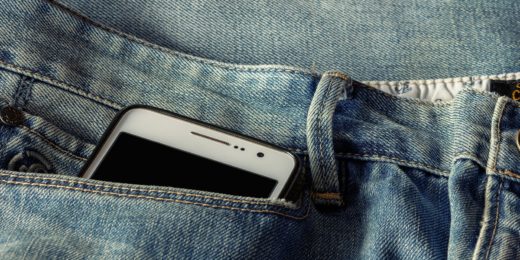I don't relish being a party pooper, but I have some bad news: Any way you sip it, alcohol is a low-grade poison. (We all know this -- if you're ingesting something that makes you wobbly, forgetful and prone to questionable choices, it's probably not a superfood.)
But in people of East Asian descent, who are more likely to carry a DNA mutation that hinders alcohol metabolism, drinking can be especially toxic. The heightened harm is caused by something Che-Hong Chen, PhD, senior research scientist at the Stanford School of Medicine, has been studying for 15 years -- alcohol intolerance, also known as Asian glow or Asian flushing.
Most people can tolerate a drink with nary a hiccup, but for those who experience alcohol intolerance, just a sip can bring a tinge of pink to their cheeks, a sign that toxins are building up in their system. Continue drinking, and the soft hue deepens to something more akin to a rash, often spreading to other parts of the body.
"It's not just a change in color; it can be really uncomfortable, even painful," said Chen. "I get it, because I have the mutation."
Alcohol intolerance can be far more serious than an embarrassing red hue of someone's skin: Those who experience it not only have a heightened risk for liver damage, but for oral and esophageal cancer, unless they largely abstain. (Cancer and liver problems are also a risk for people whose alcohol metabolism is intact, but the level is not as high.)
And few people know the dangers. "I presented to colleagues in East Asia -- doctors and medical students generally didn't know about it," Chen said. "Many of my friends who flush didn't know about this. Just the other day, I was talking with my oral hygienist -- she told me she's part Chinese -- and it turns out she's alcohol intolerant but didn't know that drinking carries a high risk of oral cancer."
Chen is spearheading an effort to encourage people -- both alcohol tolerant and intolerant -- to get off the sauce. Or, at least, to sip it sparingly.
"I've become very passionate about teaching people about this. I was born in Taiwan, and I know the risk for cancer there is already high," said Chen. "Drinking culture is prevalent in many Asian countries, and so is this mutation -- we have to spread awareness of the risks."
Undone by ALDH2
Chen started studying alcohol intolerance while researching possible cardio-protective mechanisms of moderate drinking in the lab of Daria Mochly-Rosen, PhD, a professor of chemical and systems biology. That project led him to a gene called ALDH2, which codes for a protein known as aldehyde dehydrogenase -- the main metabolizer of alcohol.
When someone imbibes, alcohol seeps into the bloodstream and morphs into something called acetaldehyde. The molecule is a reactive structure that, left intact, eats away at DNA and damages other molecules in the body. (The World Health Organization has classified both alcohol and acetaldehyde as a "Group 1," or most potent, carcinogen for people.) Fortunately, ALDH2 is equipped to seek and destroy. ALDH2 turns acetaldehyde into an inert version of itself -- something akin to vinegar, which is then excreted through urine.
For every molecule of alcohol down the hatch, an equal amount of the nefarious acetaldehyde brews in the blood. All drinkers -- even those whose metabolisms are suited to squelch toxins -- experience damage when they partake, but for people who carry a faulty version of the gene, the toxins run amok. The acetaldehyde won't remain in their bodies forever because other proteins break down alcohol byproducts, but the metabolism process is much slower, giving the molecule more time to inflict harm.
Some of you might be thinking, "What about that nifty trick I learned, using an antihistamine, Pepcid or other over-the-counter medications to ward off flushing?" I'm sorry to say, there's no quick fix. While the drug might tamp down the flood of histamines, the toxins still abound. "It's actually more dangerous to block the redness," said Chen. "That acts as a warning sign -- the flushing is telling you something is wrong."
A new day to celebrate
Mochly-Rosen and Chen focused on the mutated ALDH2 gene because of its global prevalence. "There are so many, something like 540 million people, who have this mutation. That's about 8% of the world's population," Mochly-Rosen said.
Among East Asians, the statistic is more sobering. In Taiwan, 50% of the population has the mutation; in Japan it's about 40%; in China, 35%; and in Korea, about 30%. Chemically speaking, if you carry one mutated copy of ALDH2 (everyone has two copies of every gene -- one from mom and one from dad), your ability to metabolize alcohol plummets to just 10% to 20% of its normal function. If you have two mutated copies, it drops to 2% to 5%.
What are we to do?
"It's not about banishing alcohol altogether," Chen said. "I'm not trying to take us back to prohibition. It's about knowing your risk for alcohol intolerance and adjusting your lifestyle so you're imbibing safely."
For six years Chen worked with the Taiwanese government to spread awareness about the risk of oral and esophageal cancer. He educated physicians, medical and college students, dentists and policy makers about the dangers of stymied alcohol metabolism.
"Che-Hong worked tirelessly, not only on the scientific publications and research that we're continuing but also to set off a new wave of education across Taiwan, particularly in academia and medicine, that's started to shift perspectives on alcohol and change policy," Mochly-Rosen said.
At one recent event for college students, he taught them a simple trick to determine whether they have the mutation: "Soak the pad of a bandage in strong liquor and put it on your hand for 10 minutes," Chen said. If a red patch appears, you're a carrier; if not, you're most likely in the clear. Chen also notes that, compared to a real genetic test, the DIY version is only about 80% accurate.
Chen's latest effort, which takes on a vibe similar to that of Dry January, involves launching a new day of recognition in East Asia and beyond: No Alcohol Day, on May 9, (or 5/9). It's fitting, Chen said, as the number 5 in Chinese equates to "no" and the number 9 equates to "alcohol." His efforts have yielded widespread, government-backed public health campaigns in with local Taiwanese government health officials promoting the day through flyers, animated videos and ads in the subway system to promote awareness of alcohol intolerance.
Chen is also bringing the day to Stanford University with the help of the Center for Asian Health Research and Education.
"This is a big priority for us," he said. "We have many East Asian students within our population, so it's important to bring this initiative close to home."
Photo by Pormezz






